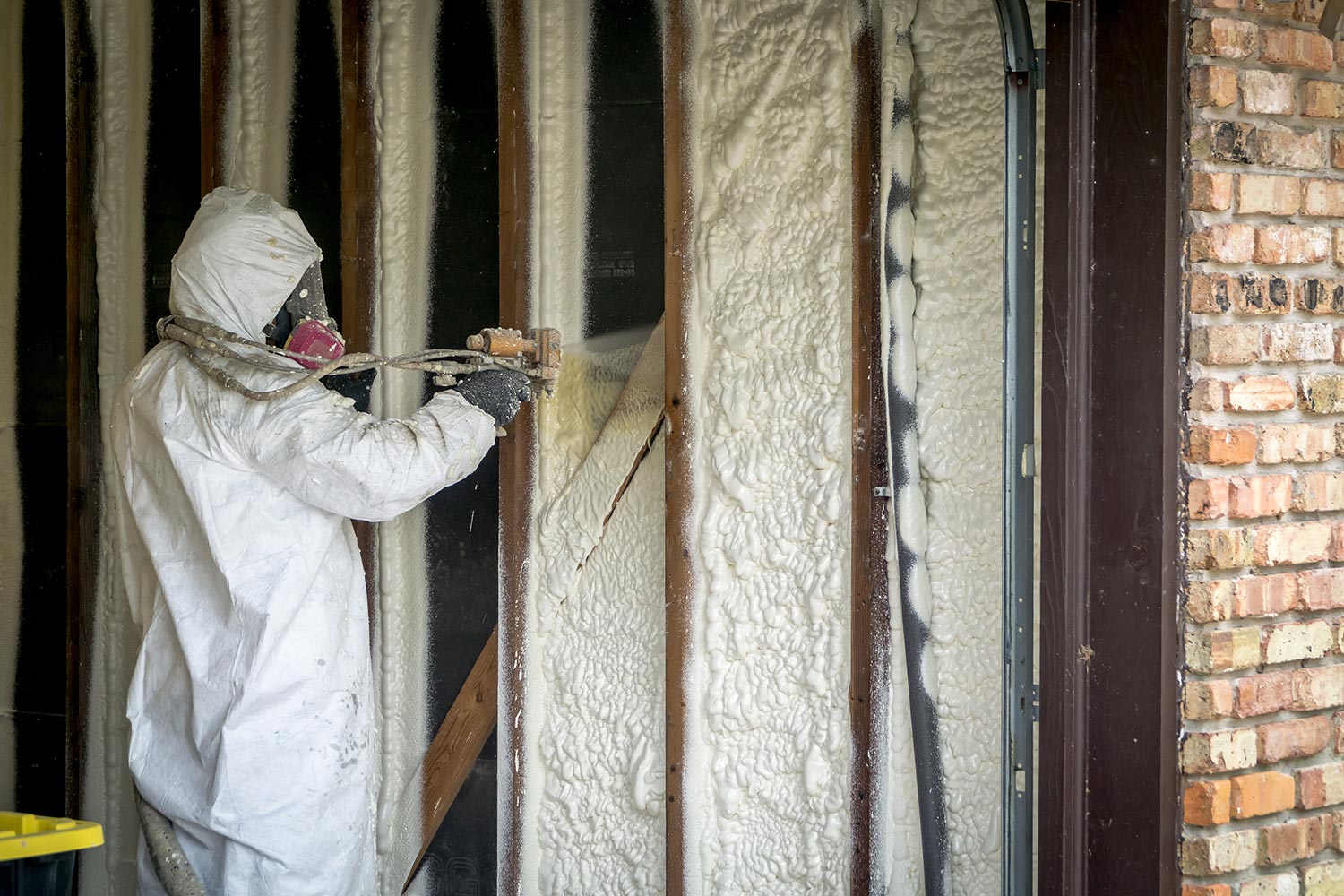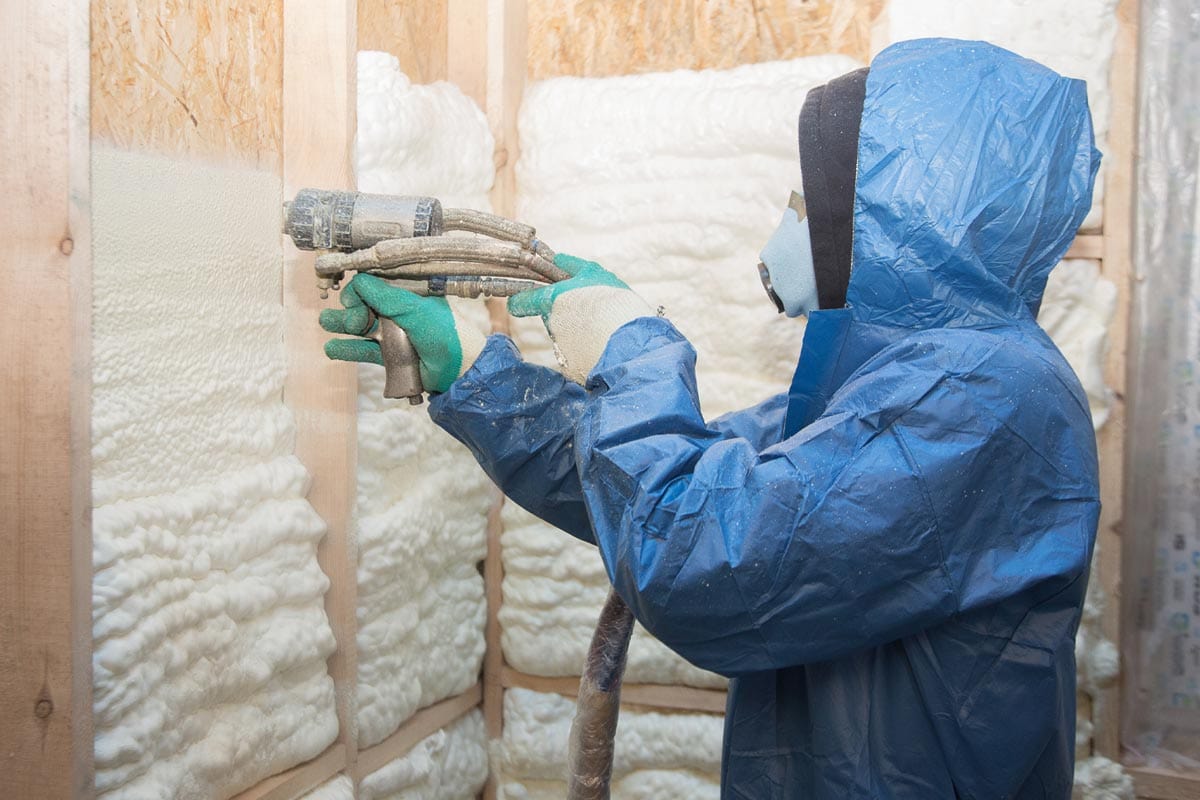You might be thinking of using expanding foam to fill gaps between the wall or under the floorboard, but what if it expands too much and starts pressing up against your flooring? We have researched this question, and we have some answers for you.
Yes, you definitely can! Expanding foam can be a good solution for many problems, especially those that involve insulation, soundproofing, and gap filling in walls and floorboards. In fact, it is for these reasons that expanding foam was invented!
Are there reasons why you should not use expanding foam between your floor, wall, or under your floorboards? Keep reading as we show you why an expanding foam can be dangerous for you. Additionally, we'll also talk about the places where you should not apply an expanding foam.
How To Apply Expanding Foam On Walls And Floorboards
If you are looking to apply expanding foam on your walls and floorboards, then you have to make sure that it is applied properly. There are a few things that you should take into account when you are going to apply the foam.
First, you need to know the type of foam that you are going to use. There are two types of expanding foam, namely: open cell and closed cell.
Open Cell Expanding Foam

An open cell expanding foam is basically a foam that contains more air pockets than its counterpart, the closed cell foam. This type of foam is designed to be applied primarily to a substrate as a soundproofing barrier.
An open cell expanding foam is softer than a closed cell foam, so expect the foam to shrink and contract over time.
Closed Cell Expanding Foam

In a closed cell spray foam, the substance has tighter spaces between cells that compress air pockets, so it is not porous.
This means it is ideal for sealing cracks, gaps, and joints around walls, floors, doors, windows, and vents. It also provides more structural support than open cell foam since it's rigid. By now, you should be able to decide what type of expanding foam to use on your wall.
Steps To Follow When Applying Expanding Foam

1. Clean the surfaces you want to apply the foam
Before you apply expanding foam, be sure to remove any excess dirt, dust, and debris from the wall surface first or the gap and spaces between floorboards.
You can use a vacuum cleaner to make cleaning easier for you, or you might need a scraper if you are dealing with stubborn grime.
If you skip this step, it could ruin the adhesion of the product. This means you could end up with a flimsy surface that won't last as long as a well-prepped surface.
2. Spray The Surface With Water
It was a sunny day, and you sprayed the expanding foam into the cracks or spaces right away after cleaning the surface, and the foam expanded and spread throughout the entire area. However, you noticed that the expansion was stunted. It's not the same as what you've watched on YouTube! We all have been there.
When using expanding foam to fill holes, cracks, and other imperfections in walls and floorboards, it's important to first spray the area with little water.
Expanding foam expands when it comes into contact with water. The water acts as a catalyst that causes polyurethane to expand and cure faster.
3. Spray The Foam

If you want to spray expanding foam around your home, there are a few things to remember before you start spraying. First, you have to ensure that you have a clear understanding of the process before you proceed. Always take time to read the label for instructions.
Second, you need to consider the safety precautions you will have to take. You don't want polyurethane to get into your eyes and skin. Always wear protective goggles and safety gloves when applying the foam.
And finally, you should also consider the amount of foam that you are going to use. When using expanding foam, you may need to adjust the nozzle depending on the amount of foam you need. You'll be able to adjust the spray pattern by changing the setting on the nozzle.
Once you have everything sorted out, you can now start spraying. However, the method of application varies on a case-by-case basis.
The best way of applying expanding foam to walls and floorboards depends on the size of the crack and crevice, the type of foam you’re using, the amount of foam you want to apply, and how well it spreads.
Check out this expanding foam on Amazon.
4. Spray The Foam With Water
In order for the foam to expand and fill up the gap, it needs to get misted. This is due to its chemical makeup. The process of expanding foam is known as polymerization.
When the foam begins to polymerize, the molecules in the foam (isocyanate and polyol) begin to react with one another. The foam expands as it does this, which is why you will see it expanding.
5. Remove Excess Foam

Expanding foam has the ability to expand up to twice its original size. As a result, the foam is going to end up sticking to the surface that it was applied to which can be unsightly.
Trimming off excess expanding foam is actually pretty simple. With a few basic items, you can remove the excess expanding foam, which could be worth the effort! Here's a list of what you'll need:
- Hacksaw or coping saw
- Cutter
- Scissors
Check out this hacksaw on Amazon.
6. Sand The Surface
Sanding removes roughness from the surfaces you're working with. If you're sanding the surface after trimming excess expanding foam, you're removing the residue left over from the foam. It is an important step before painting to ensure a smooth finish.
If you have a large area of trim, you may need to do several passes to achieve a perfect finish. The ideal sandpaper to use when sanding excess polyurethane foam is 80 to 120 grit sandpaper.
The video below should give you an idea of how to use an expanding foam more vividly:
When Not To Use Expanding Foam
Expanding foam has its place in the DIY world, but we do want to be aware of the downsides of using it. It is a great product when used correctly. However, there are some things that you should know about expanding foam before you use it in any part of your home.
Here are the main reasons why you shouldn't use expanding foam in certain situations:
In Places With Junction Boxes

It’s important to always use caution when applying expanding foam to areas near electrical outlets or other sources of electricity. This is because expanding foam is flammable and might ignite and explode if applied near the junction boxes, which makes it a fire hazard.
The trouble with this type of foam is that it is difficult to remove once it’s in place. Besides, it can block the parts and wiring inside the electrical box and prevent it from working properly. The electrical components inside the box will not function and can even catch fire due to their combustible nature.
In Areas Close To Ceiling Can Lights
Expanding foam can be applied to many surfaces; however, we suggest you do not apply it in close proximity to your ceiling canister light.
There is a risk of getting too much of the expanding foam in areas where it is not wanted, and trimming the excess can be a pain in the ceiling. In addition, it's a fire hazard because polyurethane is volatile and easily catches fire.
Areas Where Cavity Spaces Are Enclosed
Injecting foam is a technique in which the foam is injected into the space. Just like expanding foam, injection foam expands in the exact shape of the cavity and fills any voids.
However, the expansion does not take place immediately upon release and contact, which can be an advantage if you are using it in closed-cavity spaces where you will have to deal with studs.
An expanding foam expands instantly, and it can potentially exert unwanted pressure between studs and the surrounding areas, so an injection foam is the better option for this project.
The sudden pressure you put on your studs if you use expanding foam might affect the quality of your work and its longevity.
If you want to get the best results from your remodeling projects, you'll want to take the right precautions. It is easy to get carried away with shooting spray foam because it's fun, so it's best to go for slow-expanding injection foam.
History Of Respiratory Problems
When you think of expanding foam, you probably think of that stuff used to fill in cracks or holes around the home.
However, this type of foam can actually be hazardous if inhaled. In fact, you might want to rethink using it, especially if you have a history of respiratory conditions.
The dangers of using expanding foam include inhaling the chemical fumes or toxic vapors that are created as the foam expands.
If you have asthma, it's best to avoid contact with expanding foam as it contains isocyanates that are known to cause respiratory distress. As such, it can make breathing difficult and increase your chances of developing an asthma attack.
Does Expanding Foam Prevent Condensation?
We know that our houses have pretty big spaces, and it's hard to contain all the moisture from these spaces, especially when during winter when condensation is a disaster. This moisture goes through the air ducts and vents and ends up somewhere else in our home.
That's why we have to use some type of insulation to minimize this moisture. But how does insulation work? It prevents moisture from moving through the space. The expanding foam perfectly fits the bill when it comes to reducing condensation.
In Closing
Expanding foam is a great solution to sealing cracks, holes, and gaps in a variety of applications. Whether you are trying to insulate, soundproof, or seal up cracks in your wall or floorboards, expanding foam is the answer you've been looking for.
You might also like:


